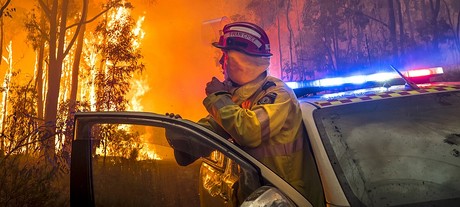WA's ICT infrastructure to the rescue

Western Australia is leveraging new technology to share data between first responders and incident controllers.
The Western Australia Department of Fire and Emergency Services (DFES) works in collaboration with Western Australian communities and other government agencies to prevent and respond to incidents such as fires, cyclones and floods.
First responders depend on clear communications to maintain the flow of information during such emergencies, and to deliver real-time situational awareness out in the field.
In this digital age, sharing real-time, location-specific data and information between first responders and incident controllers (with 000 call centre dispatchers who have access to other government agency relevant data) will significantly improve the coordination and safety of first responders, reduce response times and provide better outcomes for community safety.
In order to start leveraging new technology, DFES is currently improving and expanding its base ICT infrastructure capabilities by implementing GovNext-ICT network and telephony services.
DFES will also be improving business continuity and solution availability by adopting cloud solutions.
By moving to GovNext-ICT network services, DFES will improve bandwidth capacity particularly in regional Western Australia, enabling enhanced consumption of common cloud services, and establishing the plumbing necessary to support future innovative business capabilities, including:
- the ability to supply first responders with mobile-based data and information including comprehensive real-time situational awareness for local incident control, real-time secure incident response event logging and messaging, automated incident escalation, access to a wide range of location specific information held on corporate databases; and
- better sharing of digital information with other government departments to improve situational awareness and incident response efficiency.
Lessons learned
To implement these innovations, DFES needed to first develop its digital transformation strategy and define an ICT service model to support the strategy.
Delivering digital transformation within DFES took a ‘people first’ approach, using the Skills Framework for the Information Age (SFIA).
The recently SFIA-aligned ICT service model is still maturing and being embedded, but has already enabled DFES ICT staff to engage in the transformation and develop their capabilities in line with DFES digital transformation requirements.
The benefits realised so far include:
- improved situational awareness for first responders
- improved data sharing between agencies
- cost reduction under GovNext of approximately 20% on network and telephony services
- network bandwidth needs of the organisation met
- elimination of ageing infrastructure
- a shift to a managed service to implement a 24/7 telephony service.
Next steps
DFES is working with WA Police to deliver a co-tenanted, computer-aided dispatch system and will then evaluate how to enhance the existing emergency 000 service and radio networks to improve interoperability, standardise platforms and improve operational support.
It will also explore emerging technologies that will further expand the reach of mobility solutions beyond existing broadband network limits.
“The core value of a fire and emergency services department is the ability to effectively and safely respond to emergencies,” said Richard Burnell, director, Information and Communication Technology, Department of Fire and Emergency Services.
“Cloud computing will allow us to leverage shared data to better assist our first responders during times of emergency.”
5G drones deliver live images from emergencies
Timely images allow emergency responders to gain an early impression of the situation and provide...
NZ emergency services approach cyclone season with better comms
Emergency services will face this cyclone season with improved cellular communications...
Triple Zero Custodian Bill passes, as Senate inquiry looms
With an open inquiry into Optus and the Triple Zero ecosystem just days away, new legislation has...




